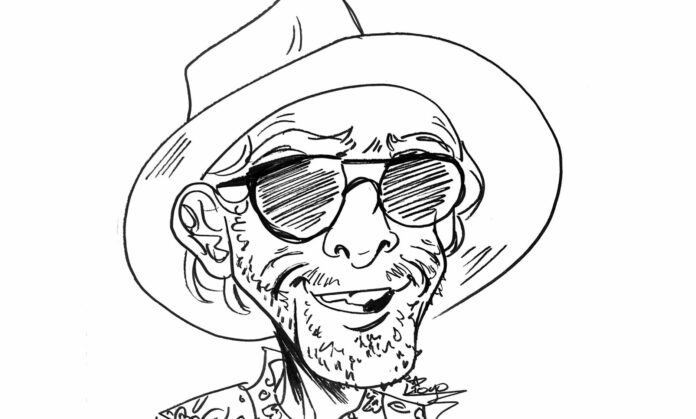On Nov. 1, 2023, a high school student by the name of Jacob accompanied his friend to a confrontation with another student, the theft of a pair of earphones and a vape pen the week prior the cause. This was one of those predetermined fights teens have practiced since teens and schools have existed and took place in an alley very close to the high school campus.
Jacob was apparently there for moral support for his friend, but when the fight escalated to more than one-on-one, Jacob removed his shirt and stepped into the fray to help his buddy. For this he was beaten so badly by a group of some 15 boys he lost consciousness. Some student witnesses to the melee, concerned about his condition, carried him the short distance to the campus. He died a week later in a local hospital at 17 years of age.
When this story hit the local news cycle, it went nationwide and there was, justifiably, an outcry from people across the land that such violence on school campuses, with or without the involvement of guns, is abhorrent and needs to be addressed on a major level. It was the same old rhetoric from both professional and lay alike, which leads only to countless committee hearings, child counselor seminars and network punditry with no real solutions while the violence continues.
In this case, because the mob of boys, all high school aged, are Black and Jacob was white, the added ingredient of racial discrimination is added to what is a bullying situation. When I was last aware of the aftermath, there were eight defendants from the age of 13 to 17 indicted for various levels of murder; the first step deciding which of the eight would be tried as adults and which would remain in the juvenile system. (In Nevada, a 13-year-old can be tried for murder.) I am sure the cases will take many months before final verdicts are found.
I have written in a past column about teen gun deaths in America, citing only the staggering numbers involved and leaving off any reasons why such violence occurs. If permitted, let me offer up what little I have gleaned over my academic years. Once convinced by a school teacher friend’s urging to be a substitute teacher, I added into my college schedule two semesters of Early Childhood Studies, where we all learned about child development from birth to 18 years of age. There are many names associated with this study but two are notable, Sigmund Freud and William Fritz Piaget; both set in motion schools of thought and observation of how and why children do what they do as they age. In brief explanation, one general theory, widely accepted, is Nature versus Nurture.
Both are pretty much self-explanatory. Nature is credited with our genetic makeup as part of natural procreation; this is why siblings and cousins often share many physical traits. These traits we get from parents, grandparents and on back through the ages mostly without genetic interruption, but once in a great while something goes wrong somewhere along the way and one person may exhibit a trait, or traits, outside the norm of all previous family actions. These were once known as black sheep, or bad seeds. Study of such persons led to the identification of myriad human conditions existing since birth, which now are treatable or controllable.
In Nurture, the study is, once again in briefest form, what a child experiences from crib to around 18 years of age. This entails all a child takes in with the five senses; starting with hearing. It is known that what a mother hears and how her body reacts to what she hears is heard and felt by the child she carries, so if she is relaxing to calming music so is her child. But if she is defending herself from physical blows or loud recriminations, her body releases chemicals with the opposite effect on the fetus. With no apparent birth defects, some children behave in manners unacceptable to society but normal in their environment. Low-income neighborhoods, single-parent homes and substandard schools are often cited to produce more criminal acts than do upper middle-class areas overall. If young people do not receive guidance on what the greater society holds to be acceptable and unacceptable, then they will take it upon themselves to choose a path and bad choices are made. And there are ample studies to show why bad things happen to young people.
In the coverage of Jacob’s actions and the manner of his death, there were the expected views of various professionals, one of which I want to refer to here. David Tanenhaus, history and law professor at the University of Nevada, researches juvenile law and cited the many studies that show young people are not developed enough in the brain to control impulses, see consequences or plan ahead. “Imagine you are in a car that has really good acceleration but it has terrible brakes,” said Tanenhaus. “That’s a way to think about adolescence.” I believe the day will come to those young boys who beat a fellow human being to death over a couple items worth only a few dollars when they realize how wrong they were; some will come to this while serving time in prison. Others will not make the adjustment and will see trouble all their lives.
The reason this story struck a nerve with me is because the young boy Jacob is a junior, his father, the senior Jacob, has an older brother who is the natural father of my oldest grandson Cameron. While Cam and Jacob were raised with little or no contact and in far different situations, I don’t consider the Nurture aspect as much as I do the Nature. That part makes me wonder if Cam would step into such a distressed situation; I trust he will never have to make that choice.
Take care. Peace.














